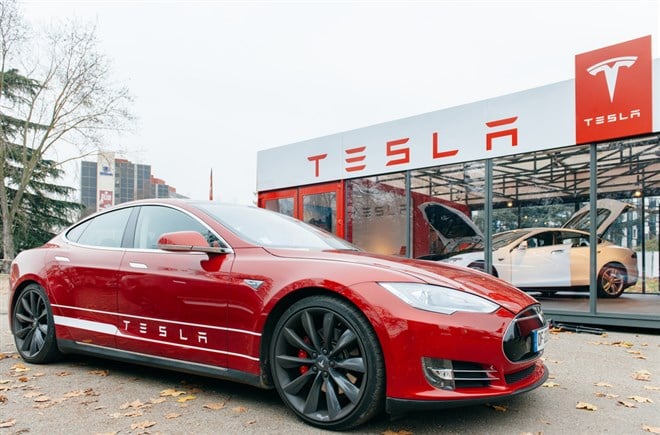
Tesla Inc. (NASDAQ: TSLA), the undisputed electric vehicle (EV) heavyweight, has taken its share of punches.
A series of negative headlines have dragged the stock to its lowest level since the 3-for-1 split and down more than 30% year-to-date. The elevated trading volume during the downturn suggests that investors expect more bad news to come.
It’s also an ominous sign for the S&P 500 when Tesla is the fifth largest holding. The benchmark’s five lead horses are each down 20% or more in 2022.
Among Apple, Microsoft, Alphabet, Amazon and Tesla, the EV maker has arguably the best long-term growth potential. In a market in control of the bears, Tesla stock predictions show that the volatile stock might have the most to lose.
Why is Tesla Stock Down?
Ahead of the company’s earnings report next week, Tesla provided an underwhelming Q3 vehicle update. The October release showed that 343,830 vehicles were delivered during the summer period and represented 94% of what was actually produced. The 20,000-plus vehicle difference was blamed on an inability to find enough (reasonably priced) trailers to ship to customers as production ramped near the end of the quarter.
While the shutdown of the Shanghai factory limited production, some have speculated that demand in China has slowed due to macro pressures and the rise of local players like Nio.
Making matters worse, CEO Elon Musk’s on-again, off-again affair with Twitter continues to distract investors. In yet another plot twist, Musk filed court documents that will move the $44 billion Twitter acquisition forward after he tried to get out of it for months. It is a price tag that looks even more aggressive now that Tesla’s market value is two-thirds what it was at the start of the year.
Adding to the fireworks was Musk’s controversial Twitter poll about the Russia-Ukraine war. Musk offered three likely Pro-Russia outcomes for the conflict that infuriated Ukrainians and Americans, setting the tone for Tesla’s ugly 15% one-week plunge.
How Will Tesla Perform in 2023?
The company also announced that Tesla semis will roll out starting December 1. PepsiCo Inc. (NASDAQ: PEP) will be the first to get its hands on the 500-mile range, fully electric transportation truck. The news caught the market by surprise because the semi wasn’t expected to roll off the assembly lines until next year.
While it failed to revive the stock, it is good news for the long haul. It gives Tesla a fifth product on the road and advances its push into the commercial EV market much sooner than anticipated. Anheuser-Busch Inbev SA (NYSE: BUD) and Walmart Inc. (NYSE: WMT) are among the other consumer giants lined up to receive the highly touted semi.
As manufacturing capacity expands in 2023, Tesla plans to crank out many more Model 3s, Model Ss and semis, shooting for 50% annual vehicle growth over time although supply chain disruptions could weigh on near-term growth.
Combined with the revenue generated in the energy generation and storage businesses, analysts project 40% top line growth and a 35% increase in earnings per share (EPS) next year. The latter forecast would represent half the growth expected in 2022. It represents a large part of why the stock is trading nearly 50% below its November 2021 peak.
Is Tesla Stock Overvalued?
After suffering its worst pullback since the beginning of the pandemic, the share price is lower. Does that make Tesla's valuation more attractive?
The stock’s lofty P/E ratio has always been a concern of the bears. The growth trajectory has been impressive, but tweet-influenced retail traders have long been bidding Tesla "to the moon." When a stock is priced to perfection and something goes wrong, the selloff can be profound.
The 200% profit growth Tesla posted in 2021 was not sustainable but market euphoria priced the stock as if it were. With a more modest 70% earnings growth expected this year, the shares trade at 58x 2022 earnings. The P/E ratio goes down to 43x based on next year’s earnings estimate (compared to the S&P 500 at 15x the 2023 consensus earnings estimate).
These valuations are far more reasonable than they were a year ago when Tesla could seemingly do no wrong. However, a witch's brew of negative press can swirl at any time, even for Tesla.
Given the Twitter overhang, vehicle delivery challenges and volatile CEO, the risk-reward still looks unfavorable. There will come a point when the not-so-premium valuation becomes worth taking for a test drive.













